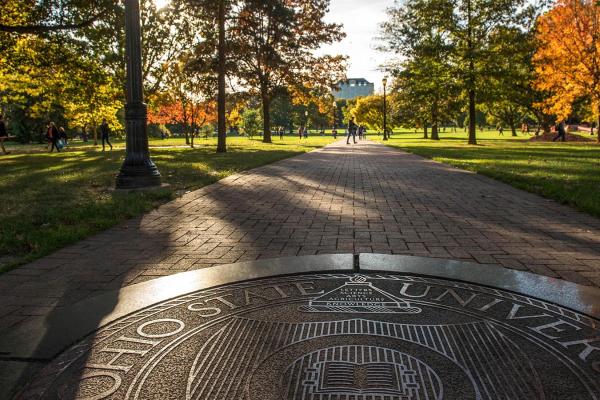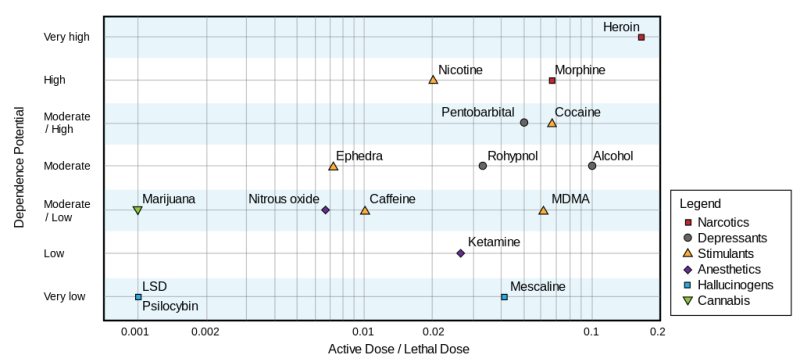Problem Children

In the mid 20th century there was an emerging field of research on novel natural products and their synthetic analogues. Some of these compounds possessed unparalled potential in treating recalcitrant psychiatric ailments like depression, anxiety, and addiction. During this period, the US CIA engaged in one the most notorious operations involving its own citizens, Project MKUltra1. In what seems like the backdrop of a science fiction story, MKUltra set out to test these powerful substances on human subjects – often without consent - in an effort to control their minds. With evidence destroyed before it was declassified, the true extent of the findings and harm caused by MKUltra is still shrouded in mystery. However, the experimentation on and subsequent “suicide” of a US biological weapons researcher raises the question of what were the true intentions of bestowing the highest illegality to the once promising psychoactive drugs.
Renowned chemist Albert Hoffman is one of the most prominent figures in elucidating the structures and bringing the use of psychoactive substances into the eyes of Western culture2,3. The truth, however, is these compounds have well documented use and often play a central role in native spiritual lore and psychiatric healing for at least thousands of years – including mescaline (peyote cactus), psilocybin (psychoactive mushrooms), DMT (ayahuasca), ibogaine (iboga), and LSD (semi-synthetic derivative of a fungal plant pathogens’ metabolites), among many others4. Though there is a recent resurgence in general and scientific curiosity for these compounds, the stigma against them reverberates in contemporary society through the mixed feelings, eye rolling, and incarceration associated with these compounds. Nonetheless, the scientific community in the mid 20th century reported unique potential for these psychoactive substances to treat addiction, depression, and anxiety with single dose efficacy and little to no risk for dependency/addiction and physical harm5,6,7 (Figure 1 adopted from [6]). A recent meta-analysis that compiles this literature report that a single dose of LSD is enough to significantly reduce alcoholics’ alcohol consumption for up to a year7, and the founder of Alcoholics Anonymous stated that LSD could be a powerful catalyst for the spiritual realization necessary in the first step of his program8. Furthermore, there is an abundance of anecdotal reports and newly emerging observational studies of ibogaine treating opiate addiction whilst also subsiding withdrawal symptoms9,10. Alas, the initial findings of these compounds were not enough to quell the “civilized” societal revolt against their reception in the counter culture movement and it ultimately culminated in their illegality under the Controlled Substances Act of 1970. But is their illegality the inevitable result of their integration into society or was it part of an elaborate campaign built on the findings of a conspiracy theory?

It is often the knee-jerk – and correct – reaction to denounce nefarious government action as unfounded conspiracy. However, MKUltra is one of the most blaring counter examples with declassified documentation that confirms its intentions and actions, even after a significant portion of the evidence was destroyed by CIA officials. Officially sanctioned in the 1950s, MKUltra set out to test a variety of methods to control the human mind. One such method involved the use of the beforementioned emerging substances, most notable being LSD. The compounds were illegally dosed to mental health patients, prisoners, drug addicts, sex workers, and even high-ranking officials that did not consent. Perhaps most notably, Frank Olson, a biochemist and biological weapons researcher, was unsuspectingly dosed with LSD at a work retreat in 1953. One week later, he allegedly jumped out of a window and committed suicide in what persists as the darkest image of the most problematic potential side effect of LSD. Though a significant portion of CIA documents on MKUltra were destroyed following the Watergate scandal, the persisting documents, an independent autopsy report, and contemporary knowledge of LSD’s true side effects is sufficient to call Olson’s suicide into question as a potential homicide incited by the CIA.1
An internal investigation led by the CIA, the agency that oversaw Frank Olson prior to his death, alleges that Olson suffered a psychotic breakdown and “chemically-induced psychotic flashback” following his unsuspecting dose of LSD. Though the probability of an individual experiencing a psychotic breakdown following ingestion is low, it is not completely unreasonable, as one of the supported side effects of LSD is the catalyzation of psychotic breakdowns in individuals predisposed to such psychiatric ailments. Flashbacks, on the other hand, are not sufficiently supported to be caused from LSD alone. Hallucinogen persisting perceptual disorder (HPPD), the clinical diagnosis associated with flashbacks, is potentially caused by a history of heavy and combined drug use prior to and during hallucinogen ingestion11. The homicidal conspiracy within the broader MKUltra conspiracy alleges that following consumption of LSD, Frank Olson, a possesor of highly classified information before MKUltra was known to the public, encountered serious internal conflict with his role as a researcher of weapons that harm other people. Following this realization, he allegedly resigned from his position and the CIA required that he stay under their psychiatric oversight until his death a week later. An autopsy performed at the request of his family roughly 40 years later found no evidence of the cuts and abrasions associated with breaking through a glass window and instead found a haematoma unrecorded during the initial autopsy that had likely been caused by a heavy blow, perhaps by a hammer12.
Frank Olson did not live to see the start of the international Drug War. The Controlled Substances Act banished LSD and its psychoactive relatives into a scheduling system alongisde the most deadly and addictive substances like heroin. As is the case with the illegality of other drugs like marijuana and crack, the government leveraged the new legal precedent to incarcerate people it deems unruly. The illegality of the once promising psychoactive research of the mid 20th century was used to squash the power of the leaders and progenitors of the counter culture revolution. If the conspiracy within a conspiracy of Frank Olson’s death is to be believed, then it demonstrates that alongside investigating potential mind controlling substances, Project MKUltra accomplished the opposite of its goal: The dosing of Frank Olson revealed to himself the inhumane results of a biological weapons researcher and liberated his mind from the influence of the agency that killed him.
Written by TPS Fellow Zach Konkel
References
- “PROJECT MKULTRA, THE CIA’S PROGRAM OF RESEARCH IN BEHAVIORAL MODIFICATION” U.S. Government Printing Office (1977). Accessed June 4th, 2020.
- Dr. Albert Hofmann; translated from the original German (LSD Ganz persönlich) by J. Ott. MAPS-Vol. 6, No. 69 (1969)
- Hofmann, A. "Psilocybin und Psilocin, zwei psychotrope Wirkstoffe aus mexikanischen Rauschpilzen." Helvetica Chemica Acta 42: 1557–1572 (1959).
- French, L. A. “Psychoactive agents and Native American spirituality: Past and present.” Contemporary Justive Review 11: 155-163 (2008)
- Gable, R. S. “Acute toxicity of drugs versus regulatory status.” In J. M. Fish (Ed.),Drugs and Society: U.S. Public Policy, 149-162, Lanham, MD: Rowman & Littlefield Publishers. (2006)
- Grob, C. S., Danforth, A. L., Chopra, G. S., “Pilot Study of Psilocybin Treatment for Anxiety in Patients With Advanced-Stage Cancer.” Arch Gen Psychiatry 68: 71-78 (2011)
- Krebs, T. S., Johansen P. O. “Lysergic acid diethylamide (LSD) for alcoholism: meta-analysis of randomized controlled trials.” Journal of Psychopharmacology 26: 994-1002 (2012)
- Hill, A. “LSD could help alcoholics stop drinking, AA founder believed.” The Guardian (2012). Accessed June 4th, 2020.
- Brown, T. K., Alper, K. “Treatment of opioid use disorder with ibogaine: detoxification and drug use outcomes.” The American Journal of Drug and Alcohol Abuse 44 (2018)
- Noller, G. E., Frampton, C. M., Yazar-Klosinski, B. “Ibogaine treatment outcomes for opioid dependence from a twelve-month follow-up observational study.” The American Journal of Drug and Alcohol Abuse 44 (2018)
- Halpern, J. H., Lerner, A. G., Passie, T., “A Review of Hallucinogen Persisting Perception Disorder (HPPD) and an Exploratory Study of Subjects Claiming Symptoms of HPPD.” Behavioral Neurobiology of Psychedelic Drugs 36: 333-360 (2018)
- Mooar, B. “Tests contradict U.S. story of man’s suicide.” The Washington Post (1994). Accessed June 4th, 2020.
